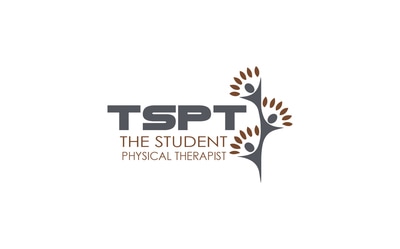- Home
- About Us
- TSPT Academy
- Online Courses
-
Resources
- Newsletter
- Business Minded Sports Physio Podcast
- Day in the Life of a Sports PT
- Residency Corner
-
Special Tests
>
-
Cervical Spine
>
- Alar Ligament Test
- Bakody's Sign
- Cervical Distraction Test
- Cervical Rotation Lateral Flexion Test
- Craniocervical Flexion Test (CCFT)
- Deep Neck Flexor Endurance Test
- Posterior-Anterior Segmental Mobility
- Segmental Mobility
- Sharp-Purser Test
- Spurling's Maneuver
- Transverse Ligament Test
- ULNT - Median
- ULNT - Radial
- ULNT - Ulnar
- Vertebral Artery Test
- Thoracic Spine >
-
Lumbar Spine/Sacroiliac Joint
>
- Active Sit-Up Test
- Alternate Gillet Test
- Crossed Straight Leg Raise Test
- Extensor Endurance Test
- FABER Test
- Fortin's Sign
- Gaenslen Test
- Gillet Test
- Gower's Sign
- Lumbar Quadrant Test
- POSH Test
- Posteroanterior Mobility
- Prone Knee Bend Test
- Prone Instability Test
- Resisted Abduction Test
- Sacral Clearing Test
- Seated Forward Flexion Test
- SIJ Compression/Distraction Test
- Slump Test
- Sphinx Test
- Spine Rotators & Multifidus Test
- Squish Test
- Standing Forward Flexion Test
- Straight Leg Raise Test
- Supine to Long Sit Test
-
Shoulder
>
- Active Compression Test
- Anterior Apprehension
- Biceps Load Test II
- Drop Arm Sign
- External Rotation Lag Sign
- Hawkins-Kennedy Impingement Sign
- Horizontal Adduction Test
- Internal Rotation Lag Sign
- Jobe Test
- Ludington's Test
- Neer Test
- Painful Arc Sign
- Pronated Load Test
- Resisted Supination External Rotation Test
- Speed's Test
- Posterior Apprehension
- Sulcus Sign
- Thoracic Outlet Tests >
- Yergason's Test
- Elbow >
- Wrist/Hand >
- Hip >
- Knee >
- Foot/Ankle >
-
Cervical Spine
>
- I want Financial Freedom
- I want Professional Growth
- I want Clinical Mastery
Prone Knee Bend Test
Purpose: To determine the contribution of neural tension to the patient's symptoms.
Test Position: Prone.
Performing the Test: The examiner passively flexes the patient's knee to end range and maintains it there for 45 seconds. The hip should not be rotated. Pain in the anterior thigh may indicated a tight/strained quadriceps muscle or neural tension of the femoral nerve. Pain on the unilateral lumbar area, buttock, or posterior thigh may indicate lumbar radiculopathy of L2-L3 nerve roots.
Diagnostic Accuracy: Unknown.
Importance of Test: The position knee flexion puts a stretch on the femoral nerve and its nerve rootlets due to the nerve passing on the anterior side of the lower extremity. Should the femoral nerve become adherent to the tissues it passes by in the lower extremity, pain or other neural symptoms may be produced in that area. Since the test places the entire nerve and its rootlets on tension, the test may also indicate radicular pain or pain originating as a result of irritation to the spinal structures. While the test may indicate irritation of the nerve roots L2-L3 due to the innervation of the femoral nerve, it should not be used solely for diagnosis. Be sure to treat the source of the impairments the patient is undergoing as you normally would. The location of the pain/symptoms should aid in determining where the pathology is and how you should treat the patient.
Note: tests should only be performed by a properly trained health care practitioner.
Test Position: Prone.
Performing the Test: The examiner passively flexes the patient's knee to end range and maintains it there for 45 seconds. The hip should not be rotated. Pain in the anterior thigh may indicated a tight/strained quadriceps muscle or neural tension of the femoral nerve. Pain on the unilateral lumbar area, buttock, or posterior thigh may indicate lumbar radiculopathy of L2-L3 nerve roots.
Diagnostic Accuracy: Unknown.
Importance of Test: The position knee flexion puts a stretch on the femoral nerve and its nerve rootlets due to the nerve passing on the anterior side of the lower extremity. Should the femoral nerve become adherent to the tissues it passes by in the lower extremity, pain or other neural symptoms may be produced in that area. Since the test places the entire nerve and its rootlets on tension, the test may also indicate radicular pain or pain originating as a result of irritation to the spinal structures. While the test may indicate irritation of the nerve roots L2-L3 due to the innervation of the femoral nerve, it should not be used solely for diagnosis. Be sure to treat the source of the impairments the patient is undergoing as you normally would. The location of the pain/symptoms should aid in determining where the pathology is and how you should treat the patient.
Note: tests should only be performed by a properly trained health care practitioner.
|
|
|
Copyright © The Student Physical Therapist LLC 2023




